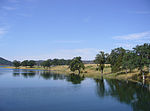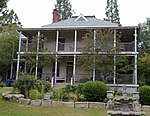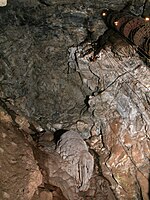Archie Stevenot
1882 births1968 deaths20th-century American businesspeopleAmerican business biography, 19th-century birth stubsBusinesspeople from California ... and 2 more
California stubsPeople from Calaveras County, California
Archie Stevenot (September 25, 1882 – August 1, 1968) was a prominent citizen in Calaveras County, California and Supreme Noble Grand Humbug of E Clampus Vitus. Born in Carson Hill, Stevenot helped found the California Chamber of Commerce and his family established the borax industry in the state. He also established the Mother Lode Highway Association in 1919 which was primarily responsible for the creation of State Route 49. As a result, the bridge across the Stanislaus River between Tuolumne and Calaveras counties on SR 49 is named the Archie Stevenot Bridge in his honor, and his birthplace has been declared a California Historical Landmark No. 769 (also found on SR 49).
Excerpt from the Wikipedia article Archie Stevenot (License: CC BY-SA 3.0, Authors).Archie Stevenot
CA 49,
Geographical coordinates (GPS) Address Nearby Places Show on map
Geographical coordinates (GPS)
| Latitude | Longitude |
|---|---|
| N 38.02765 ° | E -120.506667 ° |
Address
CA 49 4820
95222
California, United States
Open on Google Maps







